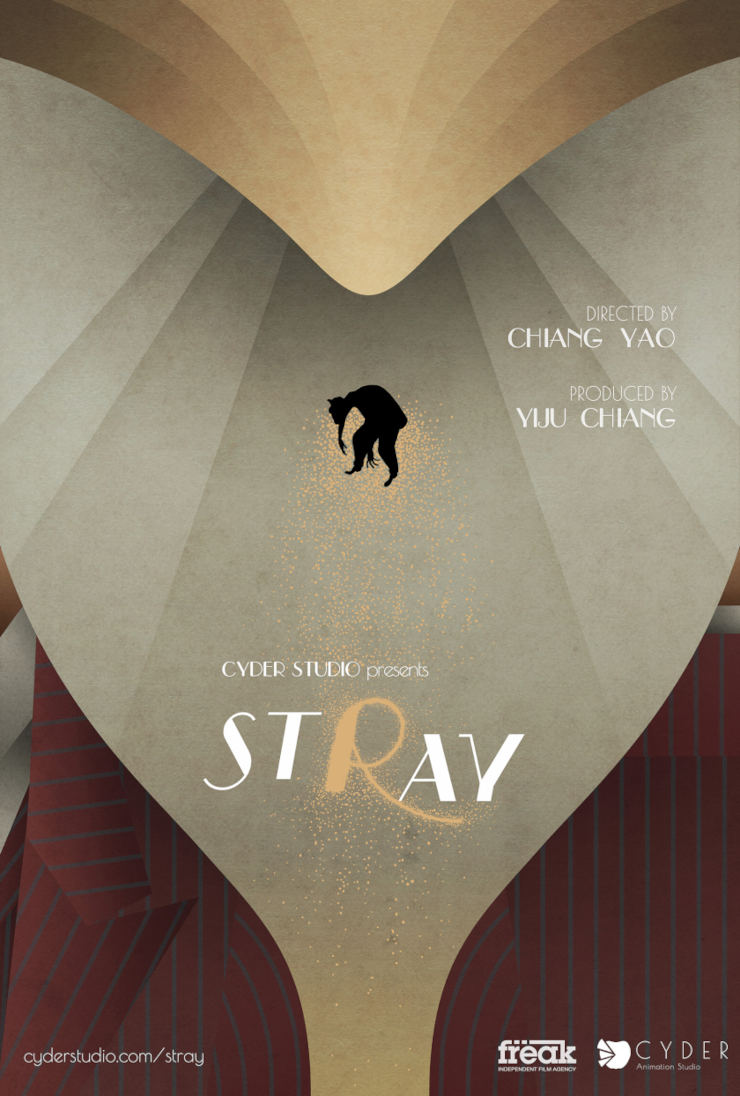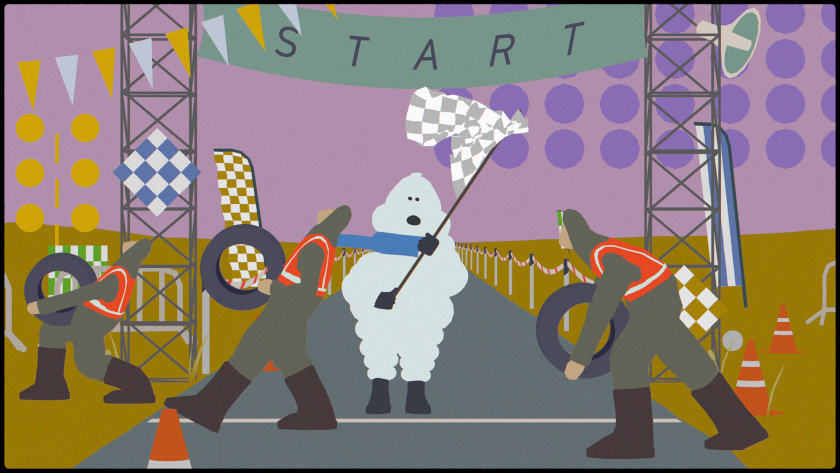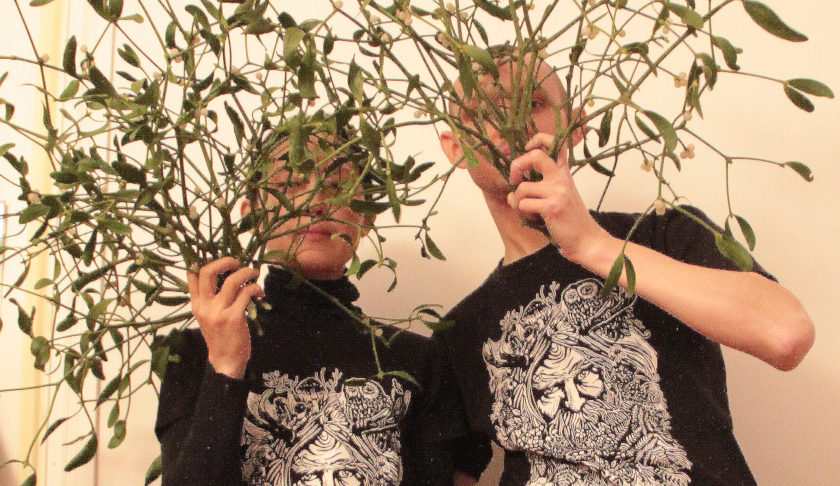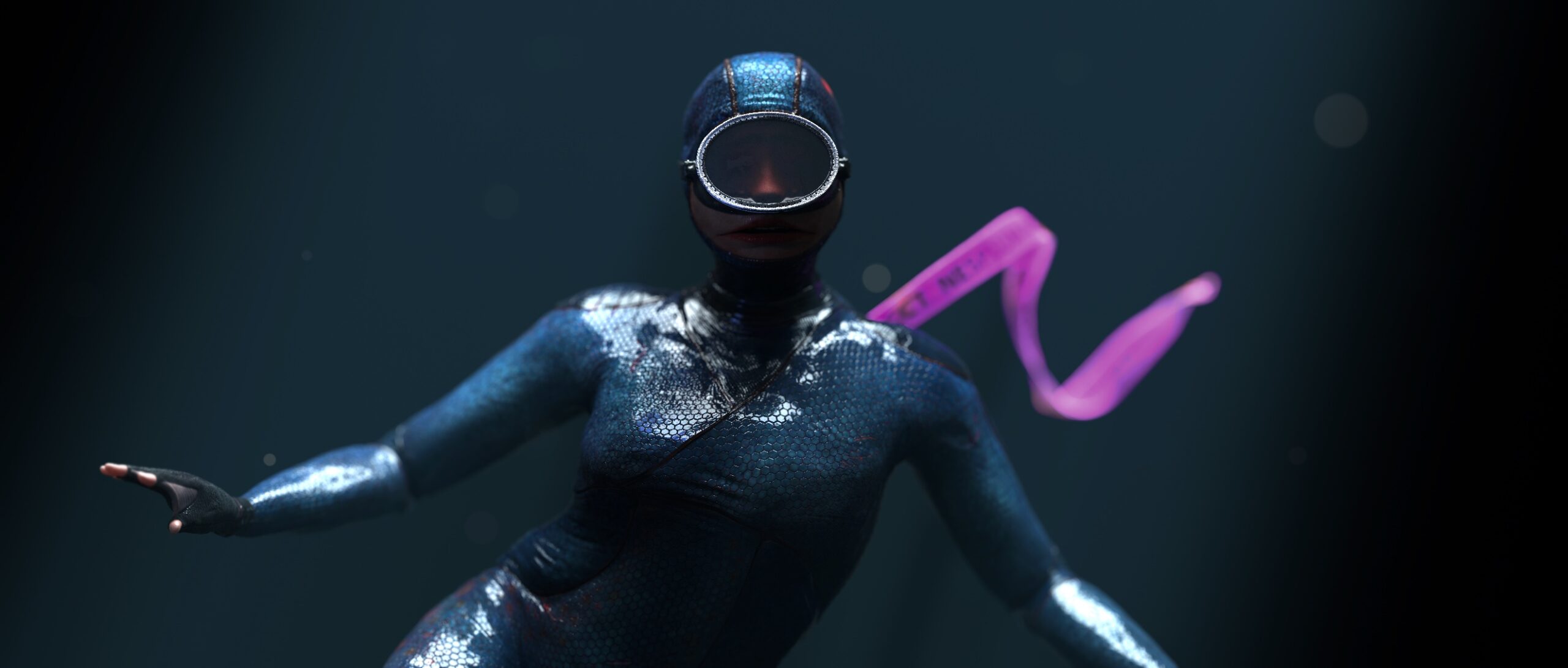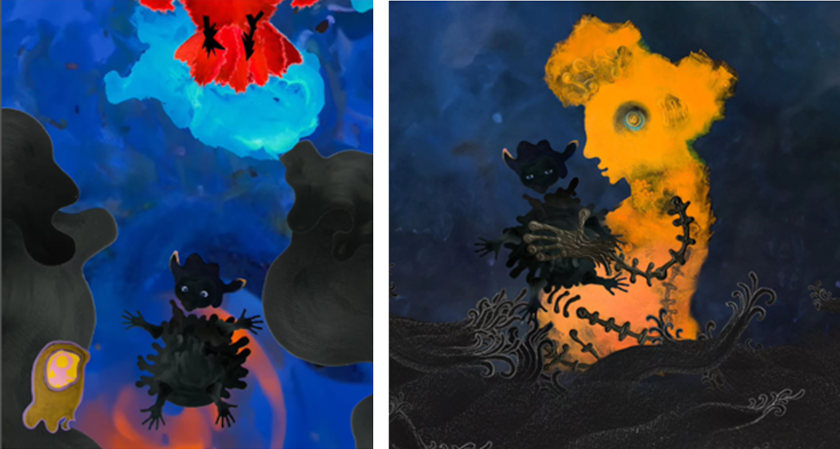St(r)ay by Chiang Yao
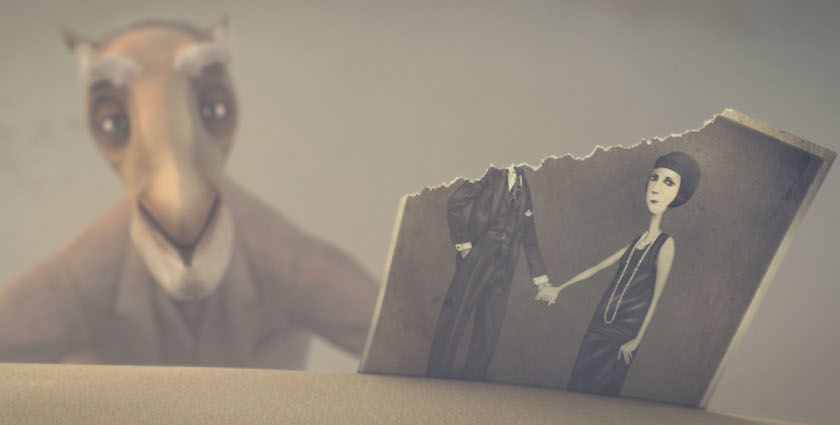
Taiwanese animation director Chiang Yao has a US upbringing and a sensitivity for the familiar. His 3D short (production: Cyder Studio) 'St(r)ay', a camel ‘s journey to find his missing wife was s nominated Best Animation Short in The 54th Golden Horse Awards, and it went out to as many as 50 festivals around the world.
We talked to the director, on the occasion of the film's online release:
ZF: Why did you choose the camel and desert setting for your film?
CY: St(r)ay was designed with the hourglass concept, representing the passage of time, and also the sand from the hourglass, extending the image of the desert. The main character Mr. Camel was actually a human, but because of dementia, when he couldn’t recognize himself, we used a non-human appearance as a symbol to address that. The reason we chose a camel for the design, was mainly because the camel is an animal living in the desert, which was in line with the overall concept; in addition, the shape of the hump was similar to the hunchback; it was easier to associate with the elderly in appearance.
ZF: The story concerns people who have aged, and are in their last chance to find happiness. What attracted you to that story?
CY: The whole concept came from my late father, who suffered from dementia in his final years. My father was addicted to gambling and liquor and pursued fame and wealth all the time. However, there was almost nothing left by his side and in his mind when he suffered from dementia. When watching him lose memories gradually, I can’t help to wonder what would stay with him to the end among those he pursued, and even create lasting value outside of itself? After seeing that there was only his family by his side, I think I had the answer.
Watch St(r)ay:
ZF: I liked the scene where the woman is on the top of a sand mountain. Was this an idea that came along early or late in the process? And did you have to delete some scenes or change others? The film's duration is ideal as it stands now.
CY: This scene was designed right after the hourglass/ desert concept and storyline were established. The main reason was to express the unreasonable stagnation of the hourglass that should have flowed like time. It symbolized the confusion about the sense of time in dementia, so I designed a surreal and somewhat heartrending scene of the wife stuck on the top of a sand dune.
It is not the same as the subtraction process of shooting a lot of footage and then editing. The cost of animation is very high per second and even per frame. It is more like the method of addition, and each frame is superimposed as accurately as possible. The budget of the film was very limited, and there were only five 3D artists including the director working on this film, so I tried hard to make every frame count; fortunately, the result seemed to be paid off for everyone involved in this production.
ZF: How troublesome was it to animate? And special challenges the film presented, like VFX or something else?
CY: The storyline of St(r)ay was relatively abstract, and the character animation style was restrained, low-key, and delicate, which was quite different from the exaggerated, strong, and dynamic commercial style that animators were used to in the past. After spending some time communicating during the production, I as a director also animated and adjusted many scenes. I was glad we finally found a performance style that allowed the emotions to flow naturally and did not seem too much or not enough. The sandstorm scene in the film requires a lot of special effects, hair and fabric simulation, which was a huge challenge for the production team with limited resources. Fortunately, the producer Yiju learned those techniques as the production went on, which made the final sandstorm more immersive.

On the other hand, since there was no dialogue in this film, in addition to character animation, letting the characters make the right sounds at the right time has also become a very important part of the performance. In the early version, Mr. Camel's voice would appear too frequently and lose focus. After communication with the sound designer, we decided not to rely too much on the voice actor, and expressed the performance through ambient sound effects, and finally created the right tone.
ZF: This was the first original short for Cyder Studio. Was there a big learning curve in producing this (getting funding, finding the right people etc.), and how long did it take -the whole effort?
CY: St(r)ay took us two and a half years from start to finish, but the intensive production period was about one and a half years. Considering that the story was relatively abstract, and there were many revisions to the preliminary design and script, we preferred to jump directly into production quickly and try to limit the cost to what we can afford rather than spending time looking for investors and funding in the beginning. In the beginning, I was too optimistic about the schedule and wanted to finish it in a year. During the production, I found that we need to overcome endless unexpected issues without losing the final quality. I had to extend the production schedule anxiously.
Due to the limited resources, the producer and I often needed to learn new techniques since we could not afford them, but the process also improved our communication skills with animators on abstract concepts, and learned to use a more practical perspective to plan the project schedule, all of which became the cornerstone of our future productions.
ZF: In the film, photographs without the face of the character are ubiquitous. Can you say more about this?
CY: The person whose face was torn off in the photo actually represents the person who had been forgotten by Mr. Camel. Compared to the photos on the wall at the beginning of the story and the half photo in the desert, only the face of Mr. Camel himself was torn off. At the end, when the photos on the wall reappeared again, his wife’s face was also torn off. The wife's face also turned into a camel’s face, which meant that Mr. Camel had forgotten his wife. When looking back at the whole film, people would see that the protagonist appears to be a camel from start to finish. It implies that he does not recognize himself since the very beginning. Therefore, the photo with the face torn off implies the process of Mr. Camel losing his memories.
ZF: How did you choose the music and the ending song?
CY: During the time of production, the producer Yiju and I were fascinated by the art deco style of the 1920s because of our living experiences in New York. Therefore, we not only used the art deco style to create a retro vibe in costume and prop design but also continued with the music and the theme song. Although the music had abandoned our ideal jazz tunes, it was mainly based on the ethereal soundtrack that could better match the sound effects to create a lonely feeling. The theme song "Time Goes On" we tailor-made for the film still appropriately presents the 20s. The retro feeling of the era was not only integrated with design and art, but also deepens the sense of sight that was gone.
ZF: Is the film a kind of protest against a 'money culture' or is it more of a reminder of having your own priorities right?
CY: That Mr. Camel tried to hold on to the suitcase filled with money symbolizes the fame and wealth that he pursued his entire life. However, he realized money was not everything when he was faced with a choice between his wife and wealth. He made the choice too late, and eventually caused an irreparable loss. Through the tragedy of Mr. Camel, we want to bring up the concept of "cherishing". The statement for St(r)ay is not as strong as the anti-money culture, but we do hope to make the audience reflect on what is more worth cherishing than money and wealth.
Film Review (Vassilis Kroustallis):
St(r)ay has a grace and a delicate sadness that fit directly its theme of going too late to make the right decisions. The desert theme and backgrounds and the camel animals rightly point out an emotional dryness, out of which not even the hourglass structure can get. With memorable scenes of a couple in the sand (and the always present suitcase), and the slim neck design of the characters - as if life is about to evaporate, St(r)ay makes the potent claim that life is too precious to be lost on ephemeral concerns -since life itself is an ephemeral concept, passing by as quickly as the sand in the hourglass. An evocative film.
CREDITS:
DIRECTOR: Chiang Yao | PRODUCER: Yiju Chiang | STORYBOARD/ DESIGN/ LAYOUT: Chiang Yao | MODELING/ TEXTURING/ LIGHTING/ EDITING: Chiang Yao | CHARACTER EFFECTS/ VFX: Yiju Chiang | COMPOSITING: Chiang Yao, Yiju Chiang | ANIMATION: Wing Lin, Chiang Yao | ADDITIONAL ANIMATION: Yngyn Lee | RIGGING: Chih-Tang Chang | ADDITIONAL RIGGING: Chiang Yao | MUSIC: Katy Jarzebowski | SOUND DESIGN/MIXING: Sam Warfield | VOICE (Mr. Camel): Sam Warfield | VOICE (Mrs. Camel): Laura Warfield | SONG “Time Goes On” Lyrics and Music: Katy Jarzebowski
About Chiang Yao
Chiang Yao is a Taiwanese director and filmmaker who graduated from the School of Visual Arts in New York. He has been fascinated by utilizing animation and the methods of motion pictures to depict personal feelings and struggles in his life. His animated shorts have been selected for and awarded by numerous international film festivals. Along with his personal projects, he has been directing cinematics in games, character animations, commercials, product videos, and virtual productions.
